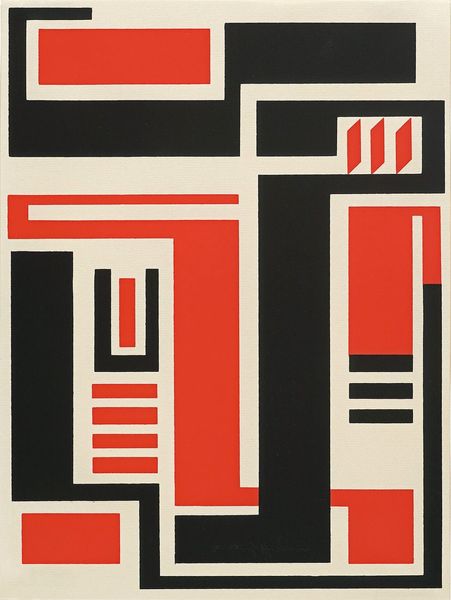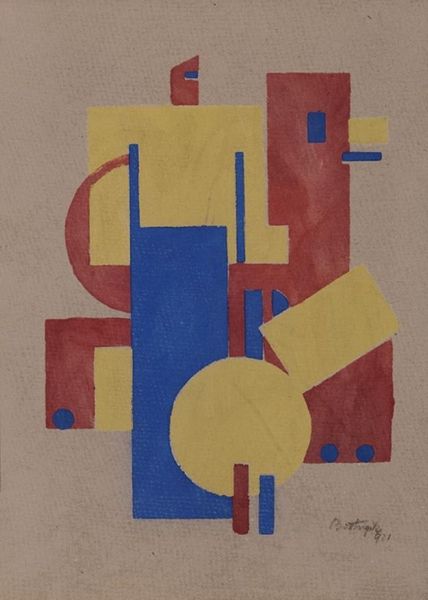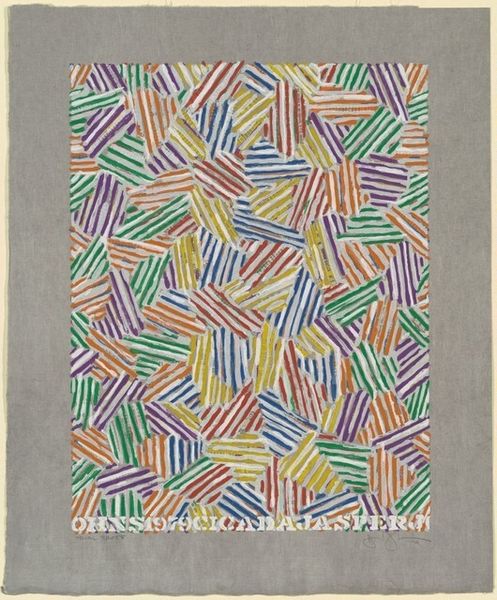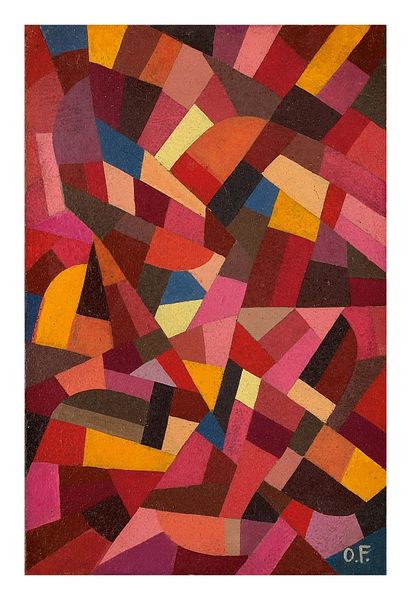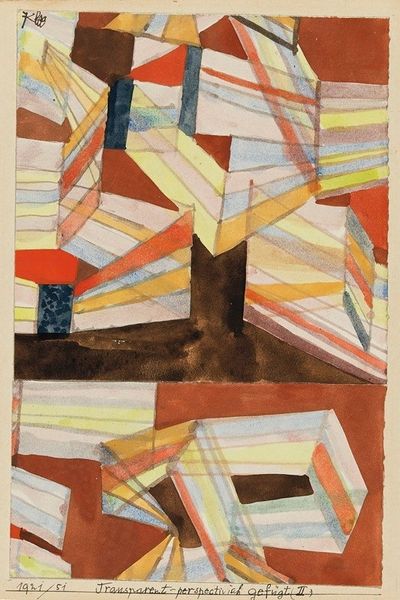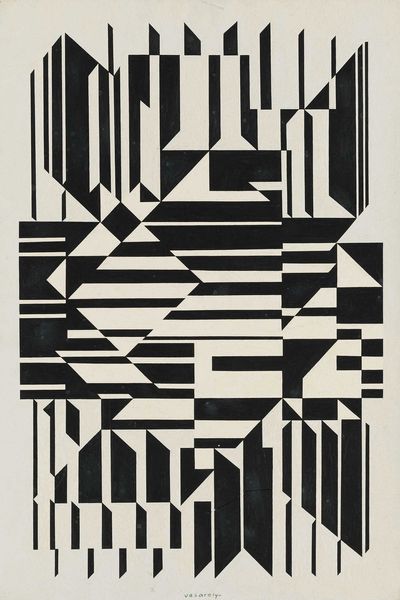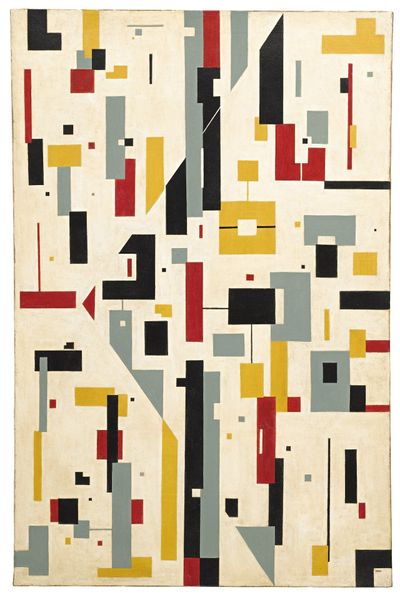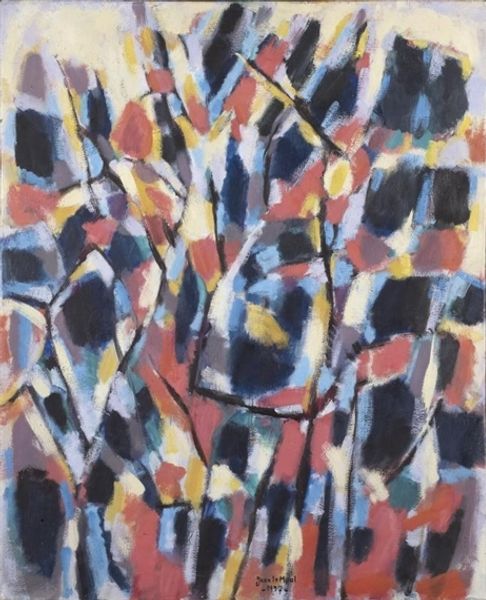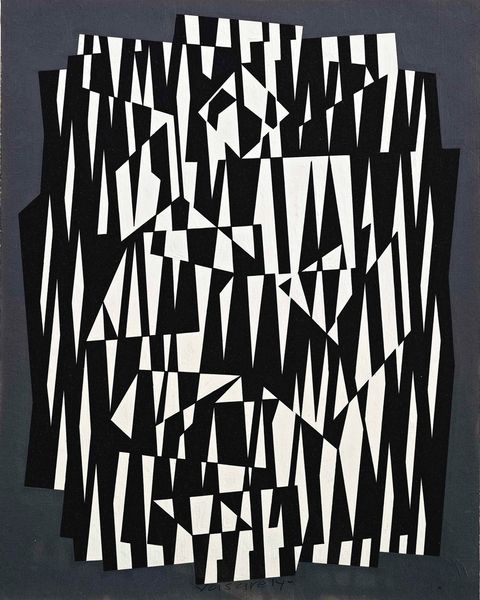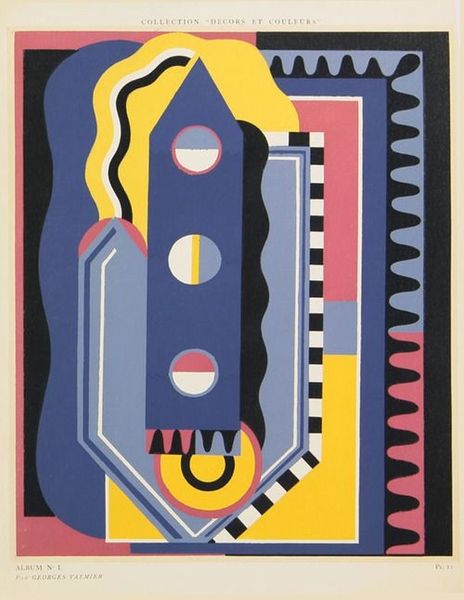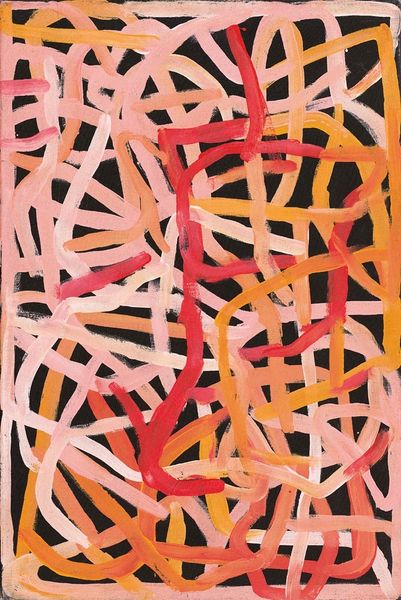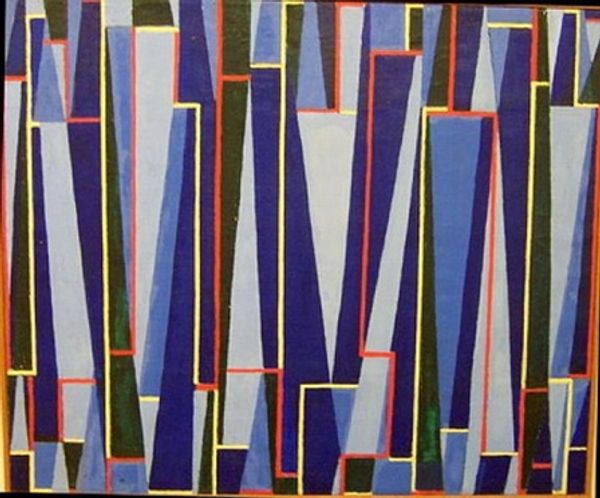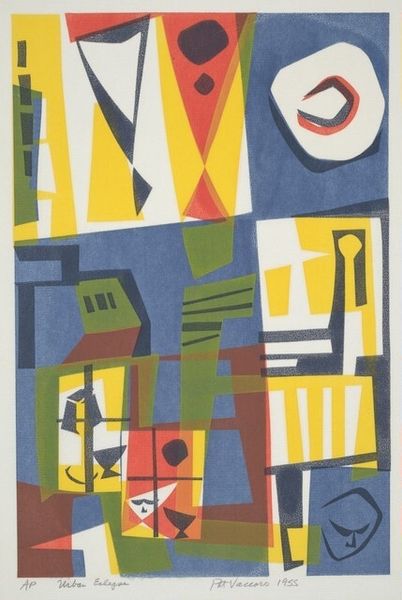
Dimensions: image: 322 x 256 mm sheet: 395 x 332 mm
Copyright: National Gallery of Art: CC0 1.0
Curator: We’re looking at Thomas Chester Slettehaugh’s print, "Blue Zebras," created in 1954. Editor: What a captivating jumble! The composition almost feels… frantic, doesn’t it? The energetic lines and bold colours practically vibrate off the surface. Curator: Yes, precisely! The interplay of black, red, yellow, and blue presents a vibrant clash. Notice how Slettehaugh manipulates geometric forms – stripes, rectangles, semi-circles - to create both unity and dissonance. He has explored post-impressionist and abstraction. Editor: I can certainly see the abstraction at play here. But given its creation during the mid-century, I am thinking, what cultural sentiments of the period are evoked through this imagery? Was it a reflection on social upheaval or the rigid formalism creeping into urban architecture at the time? Curator: Interesting point. On one level, it could be considered as part of a modernist exploration into non-representational art. The repetitive nature of the striped pattern hints at industrialization and mechanization – the relentless rhythm of modern life. However, it deviates from this with a more relaxed treatment, and an interplay with a range of softer tertiary colours which adds levity. Editor: And that title: "Blue Zebras"—what’s your take on its significance? I’m interested in understanding the intersection of nature and industrial motif, perhaps reflecting post-war environmental concerns? Curator: The title is provocative, of course. The blue of the zebras certainly disrupts our expectations, which invites us to challenge convention. Beyond that, the animal itself could function as a kind of mirror. As striped and patterned creatures that gather as a herd, zebras might even have offered an early warning on the danger to environmental convention from rapid urban development and cultural homogenisation in mid-century society. Editor: It does offer considerable food for thought! This piece manages to capture the spirit of both calculated design and spontaneous creativity. Curator: It certainly does. It makes us see the unexpected and contemplate the role of visual conventions in the creation of meaning and experience. Editor: A delightful and chaotic blend! It underscores how shapes, colours, and themes intertwine to offer not just something aesthetically pleasing but sociologically insightful too.
Comments
No comments
Be the first to comment and join the conversation on the ultimate creative platform.
